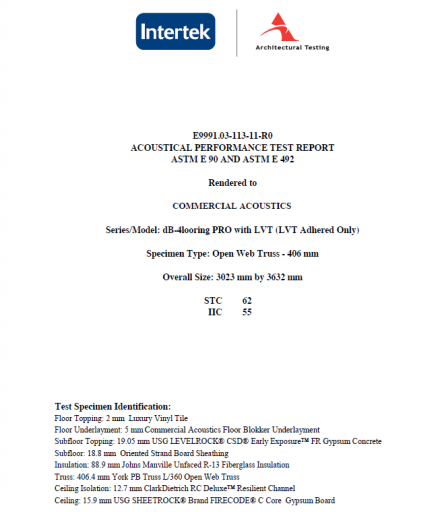Architects, developers and builders work in tandem to create ideal living and working environments and to do so, sound mitigation options need to be taken into consideration. STC and IIC requirements on a project are common. The best part is that there are cost-effective ways to achieve or exceed the requirements, many of which don ‘t require intensive installation or extra inches of living space.
How to Spec Soundproofing on Your Project
Step 1. Determine the Target STC and IIC requirements for the space. As a barometer, per the Florida Building Code and International Building code, apartments and condo’s require at least a minimum of 50 STC between adjacent living spaces, while classrooms can be 45 – 60 and some patient rooms in healthcare facilities are 60+. STCs are dependent on the level of privacy the tenants may reasonably expect as well as use-case of the rooms.
Step 2. Consider the building materials being used, potential spatial restraints and traditional building configurations to reduce noise. Oftentimes staggered stud, double drywall or resilient channels aren’t practical in areas with limited space. Our soundproofing calculator will help you determine the configuration that works best for your project.
Step 3. Review technical data and lab tests of product options. With all building configurations, it’s crucial to ensure the entire configuration of the wall, floor and ceiling assembly is designed to achieve the STC needed. Small changes such as layering the products in a new order may negatively affect the STC and IIC value achieved. Independent lab tests and comparisons should be readily available.

Since it’s not practical to have all testing configurations, it may sometimes be required to extrapolate data based on accepted industry standards. For example, hollow-core plank is a common architectural assembly in many developments, but test data is limited. Instead, you may determine the expected STC/IIC by starting at the hollow-core plank baseline, then adding in the delta-STC/delta-IIC of the various elements.
Step 4. Take into account real-world installation challenges. A product is only effective when installed correctly and as intended per the installation manual. Time restraints or an inexperienced installation team can lead to careless errors and expensive mistakes. This happens particularly often with Resilient Channel installation errors.
Step 5. During the Design Development of a project, after steps 1 – 4 are completed, a product is chosen and is referenced in the drawings by the architect. Oftentimes if it’s not a hard spec a contractor can choose to use that product or it’s equivalent. If testing and validation of the solution have been done, it’s important to hard spec a product into the building design to avoid value engineering.
See More Information about Commercial Soundproofing



